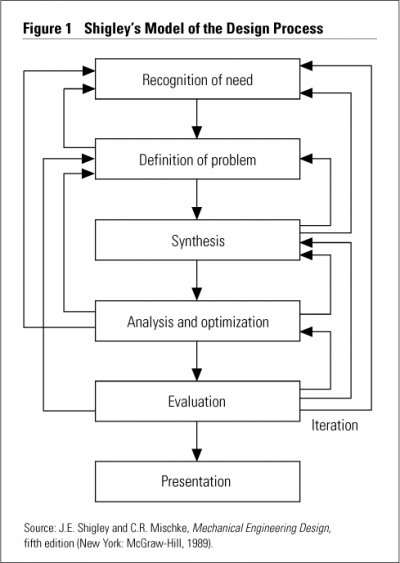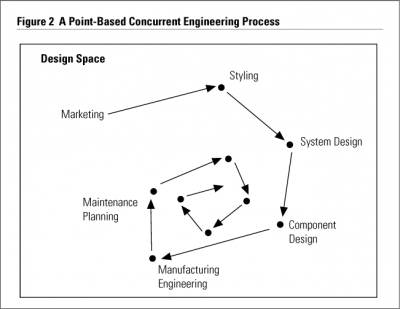Second Toyota Paradox: Difference between revisions
| Line 19: | Line 19: | ||
*Shigley is the industry standard method for mechanical design in the USA - ''Shigley’s Mechanical Engineering Design'' | *Shigley is the industry standard method for mechanical design in the USA - ''Shigley’s Mechanical Engineering Design'' | ||
[[File:shigley.png]] | [[File:shigley.png|400px]] | ||
It involves point-to-point design - | It involves point-to-point design - | ||
[[File:point-to-point.png]] | [[File:point-to-point.png|400px]] | ||
Revision as of 14:52, 10 September 2019
Also known as Set-Based Concurrent Engineering. It is not a linear process - all steps are done at the same time as Concurrent Engineering implies.
For open source product development, modular breakdown and concurrent engineering are kit. Mix in a dash of the Second Toyota Paradox - and we have the most rapid and efficient development method.
set-based concurrent engineering refers to a deliberate effort to define, communicate about, and explore sets of possible solutions, rather than modifying a point solution — and, in some cases, these sets may be deliberately more constrained than common industry practice.
This is consistent with Open Organizations, where constant external feedback drives improvement.
It is about delaying decisions by evaluating sets of prototypes. It involves excessive prototyping.
Concurrent engineering is inherently about horizontal coordination across functions (e.g, managing the interfaces of subsystems), and longitudinal coordination across development stages (e.g., the interface between product design and manufacturing system design).
Assessing Toyota
- A Toyota team has, at peak, only about 500 people, as opposed to 750 or so dedicated at peak (Chrysler)
- Ironically, however, Toyota’s success cannot be attributed to some of the concurrent engineering mechanisms U.S. companies consider essential, such as collocated, dedicated multifunctional teams, a highly structured development process, and frequent meetings with suppliers. First, Toyota does not use collocated, dedicated teams; most development personnel are organized in the traditional “chimney” structure. Toyota has a matrix organization housed within a number of platform divisions (e.g., front-wheel drive, rear-wheel drive, etc.). The general manager of a functional group (e.g., body engineering), in consultation with the chief engineer (shusa) for a car platform, assigns engineers to a vehicle program as they are needed. A handful of engineers will stay with the vehicle program throughout its duration, but most work on the program full-time only during the peak period (in the prototype stages), then move on to another vehicle program, often reporting to a different shusa.
- Excessive prototypes up to 20, 30, or 50 for parts - [1]
- Shigley is the industry standard method for mechanical design in the USA - Shigley’s Mechanical Engineering Design
It involves point-to-point design -

